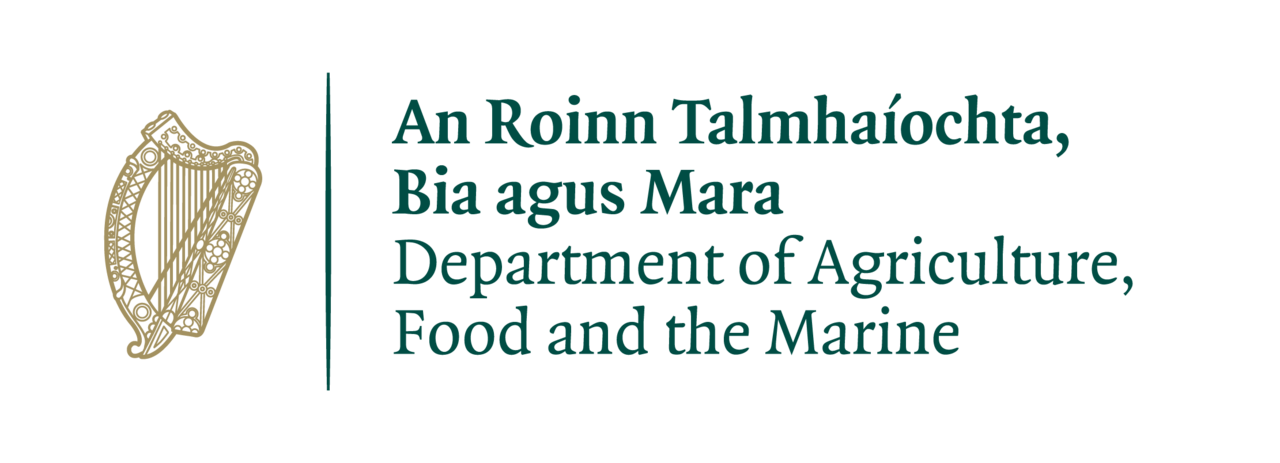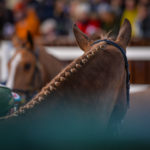Top tips we took from the Young Horse Training Series
- 9 March 2021, 16:01
-
The young horse must learn to accept the rider’s half-halt
Irish International Dressage athlete, Anna Merveldt advised that: “When training a young horse who is just starting out under saddle, one of the most important things the horse must learn is to accept and understand the rider’s half-halt,” and added that: “The half-halt is the most frequently used aid in riding. “
Horse Sport Ireland’s Coaching Manual states that: “The most important part of the half-halt aid is the weight aid (sit up and broaden your chest). Simultaneously apply the forward driving aids pushing the horse into a non-allowing hand. Immediately when you feel that the horse is beginning to react, you should answer with a slight easing of the contact. It is important that the reins do not act in a backwards manner; the horse should be ridden from behind, forward into the hand. How strong a half-halt is applied depends on the horse’s degree of sensitivity and on the rider’s skill. The aim is to achieve the result with almost unperceivable aids.”
The half-halt can be used to:
- Alert the horse and make him attentive, it is used every time before starting a new movement.
- Make a transition to a lower pace.
- Slow down the pace.
- Improve/regain collection and/or re-shape and re-balance the horse while in motion.
- Improve balance, thus not allowing a horse to lean on the bit or to go on the forehand.
For more, see our interview with Anna Merveldt.

Sarah Ennis and and Stellor Commet, a four-year-old Irish Sport Horse, competing in the 2013 Future Event Horse League
2. If the horse is weak in the core they will struggle with their balance and will struggle to perform
Irish International Eventing athlete, Sarah Ennis advised that: “The core is vital for stabilising the back and if the horse is weak in the core they will struggle with their balance and will struggle to perform.” To slowly help strengthen the horse’s core and back, Sarah added that: “Pole-work and the way in which you ride your horse is going to be very important.”
If you would like to see some of the exercises Sarah recommended, please click here.

Brian Murphy and The Peaky Blinder, back-to-back winners of the Cob Championship at the Dublin Horse in 2017 and 2018, pictured Autumn Hunting with the Glandoran Island Hunt (Photo: Caroline Mullen)
3. Fail to prepare, prepare to fail
All five experts, Sarah Ennis, Brian Murphy, Barry O’Connor, Jenny Rankin and Anna Merveldt, expressed how important it is to ensure the young horse is well prepared for their first competition. As Anna said: “Horses don’t forget the good or the bad so ideally the first experience should be a good one”.
Showing expert, Brian Murphy pointed out that knowing whether your young horse is ready for their first competition has more to do with the horse’s mental readiness than physical readiness saying: “It really will depend on how well that horse has taken to its work, mentally more so than physically.” In preparation, Brian recommended plenty of: “hacking and getting out of the arena”.
For more from Brian Murphy, please click here.
Sarah Ennis also highlighted that: “It’s important to incorporate regular days away schooling into your week when preparing for the beginning of the season”, and added that: “the more familiar and comfortable the horses are with it the easier it will be at their first competition.”

International Sport horse Agent and Coach, Barry O’Connor and Jenny Rankin, Irish International showjumper and Graduate of the FEI Rolex Young Rider Programme
4. There’s a very healthy market for Irish-bred horses
International Sport horse Agent and Coach, Barry O’Connor said: “There’s a very healthy market for Irish-bred horses.” Irish International showjumper and Graduate of the FEI Rolex Young Rider Programme, Jenny Rankin who is based with Barry explained that at their base in Malahide they are: “catering for all age groups of horses that have the quality for top sport. Some horses will be suitable for professional riders and some suitable for the amateur market.”
However, Barry added that: “the prices of well-produced, lower-level horses have increased as well. Barry highlighted that this is an area for producers with smaller budgets to really excel if they look after their costs.” He stated that: “If you have a horse who is riding well, you will sell them very easy. There’s huge demand.”
For more from Barry O’Connor and Jenny Rankin, please click here.
-
Popular

-
Latest




























